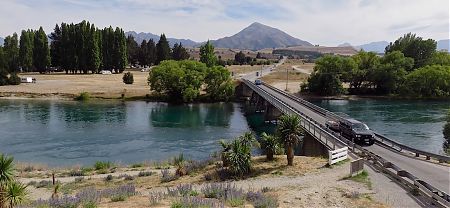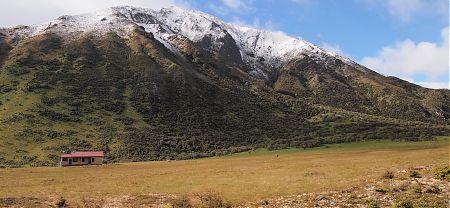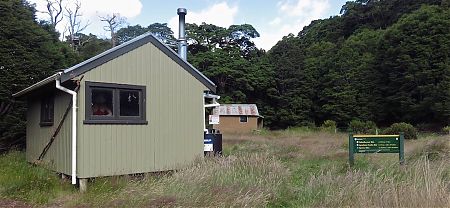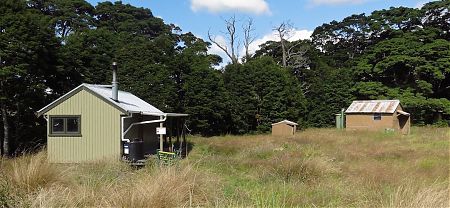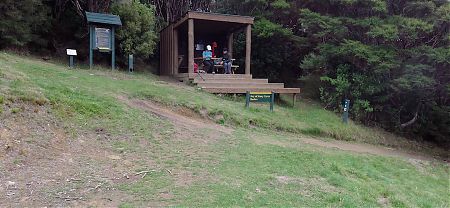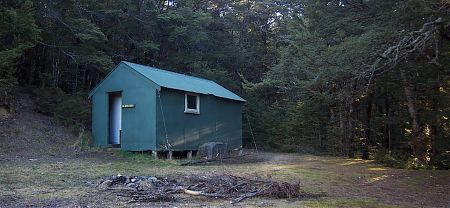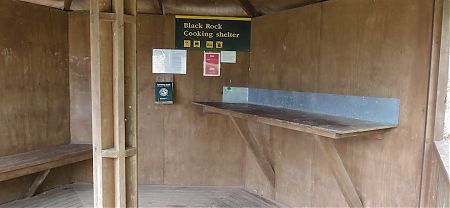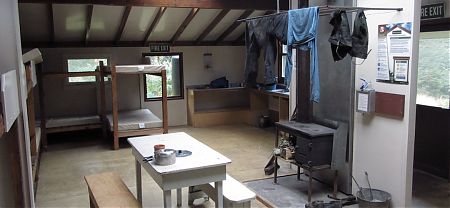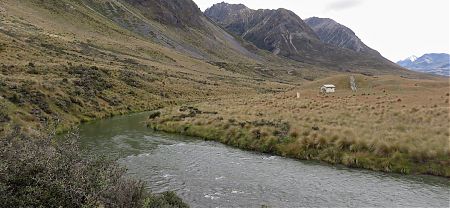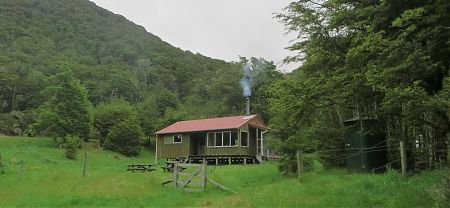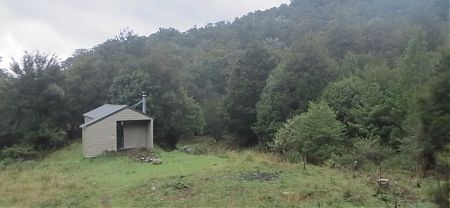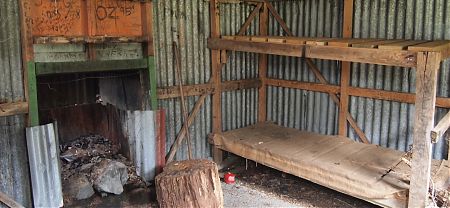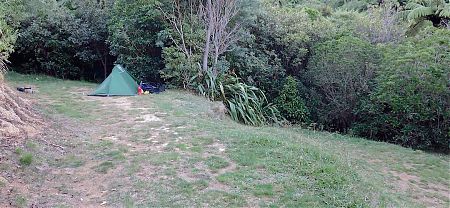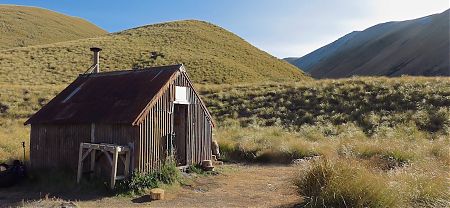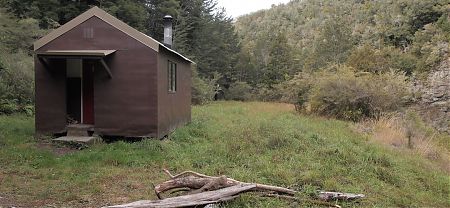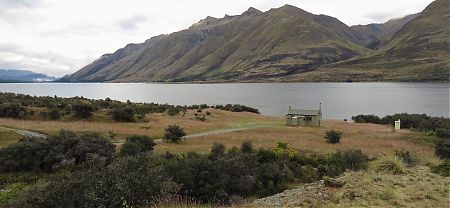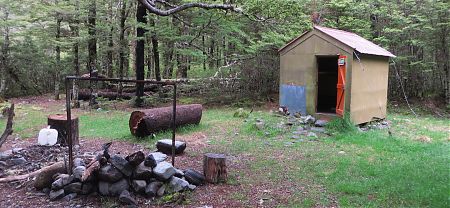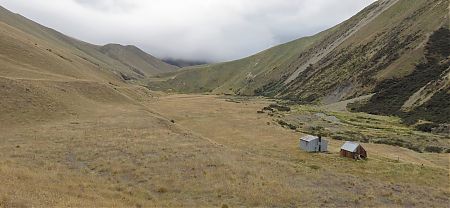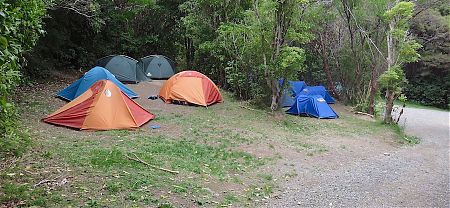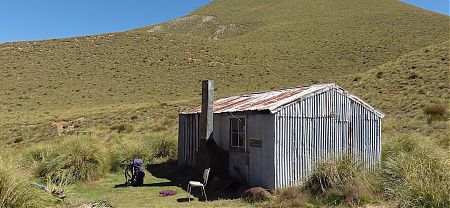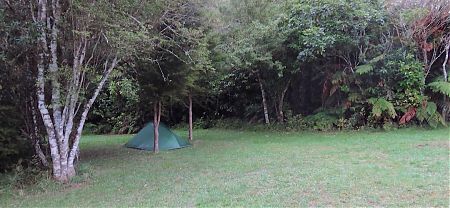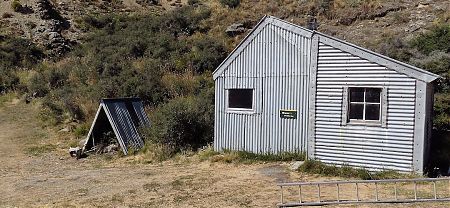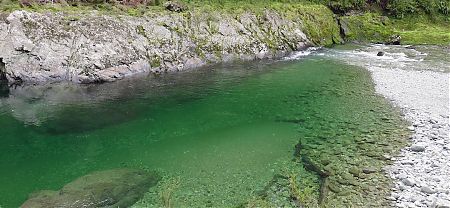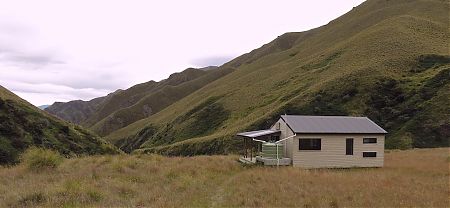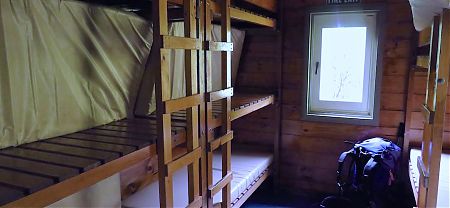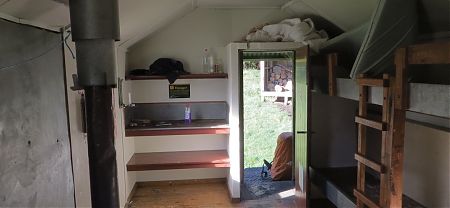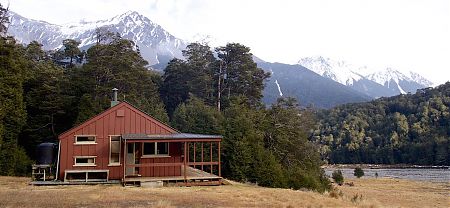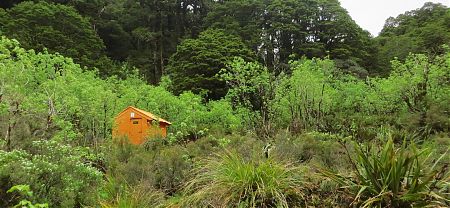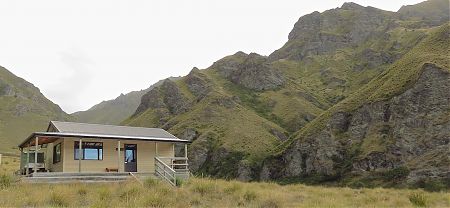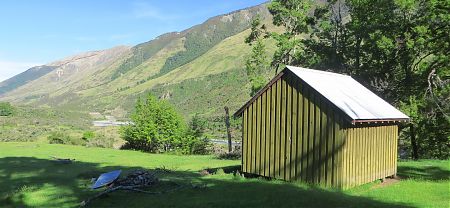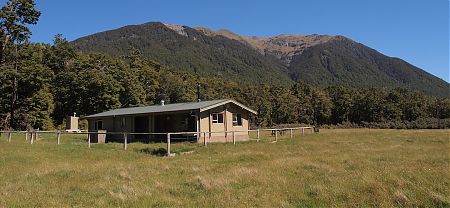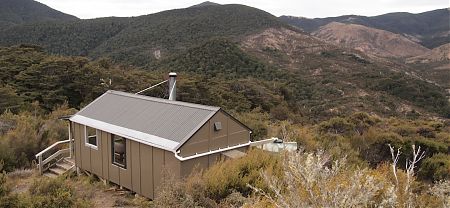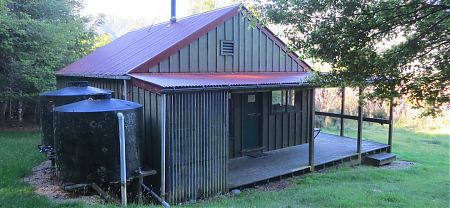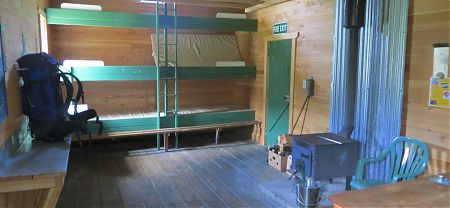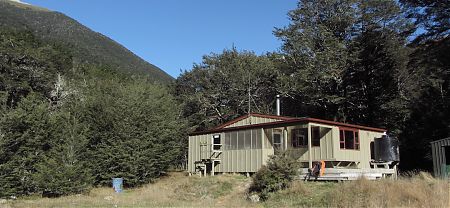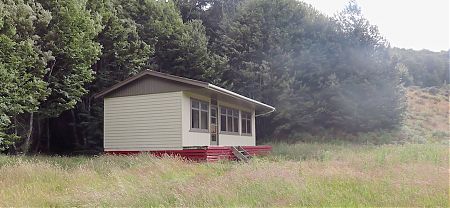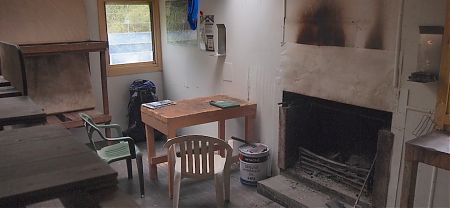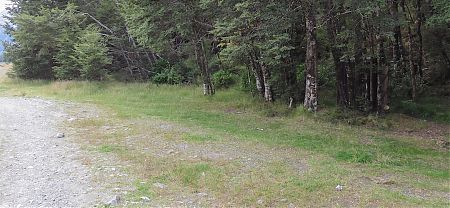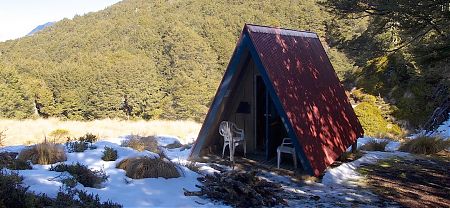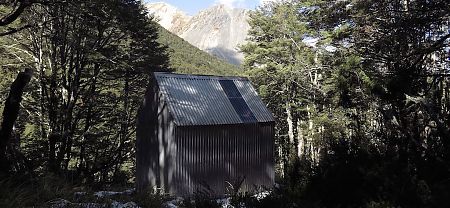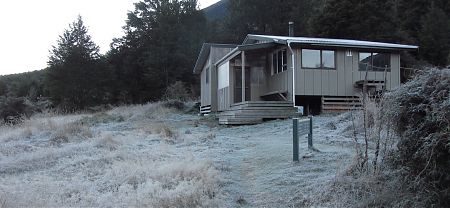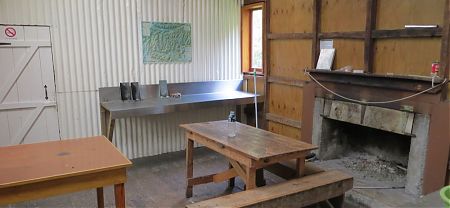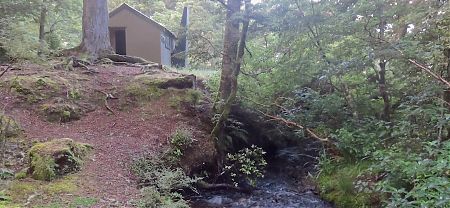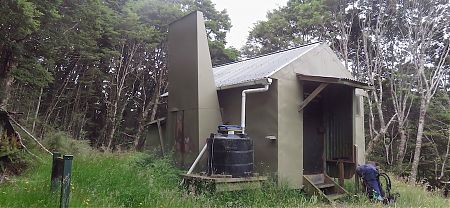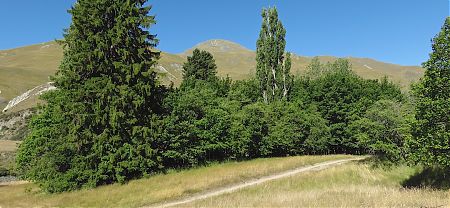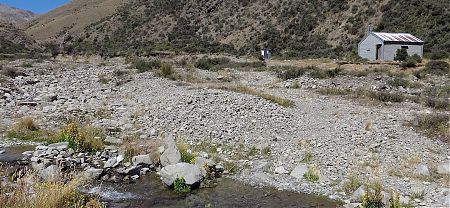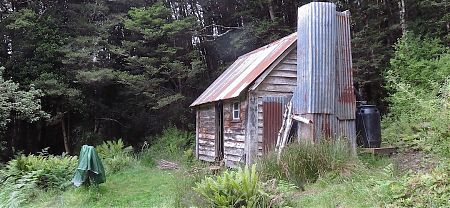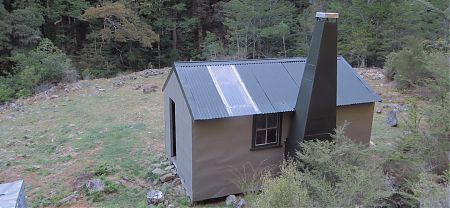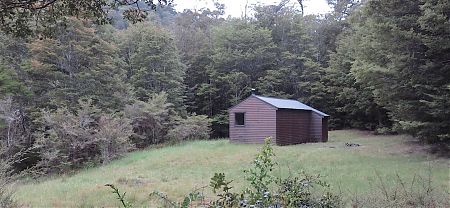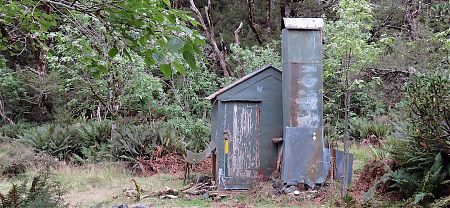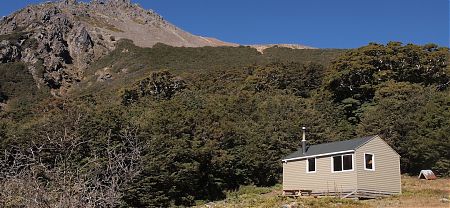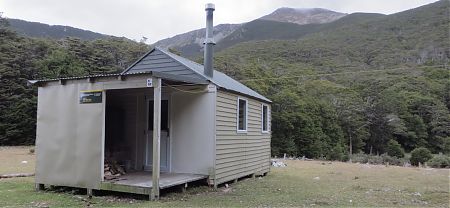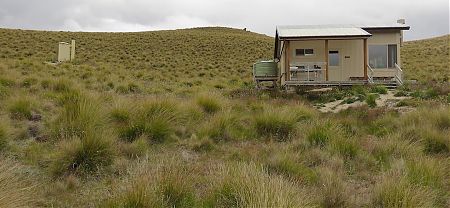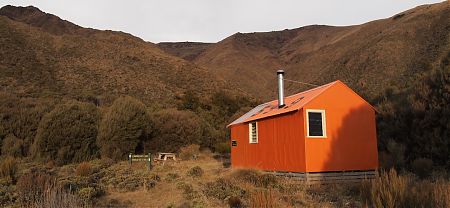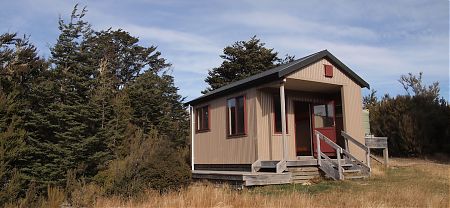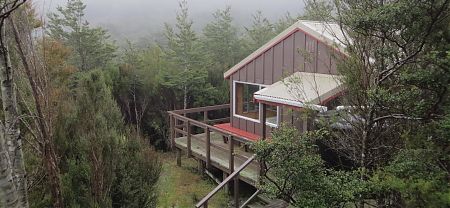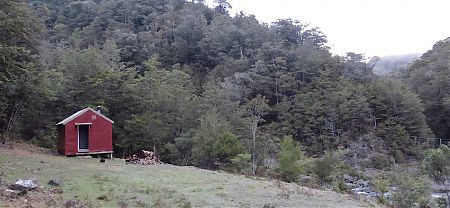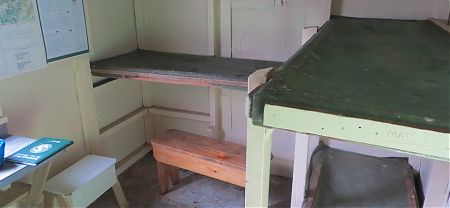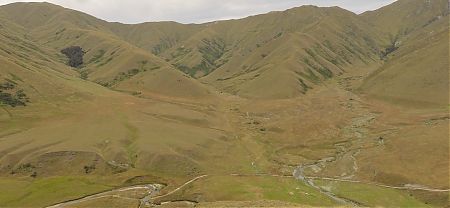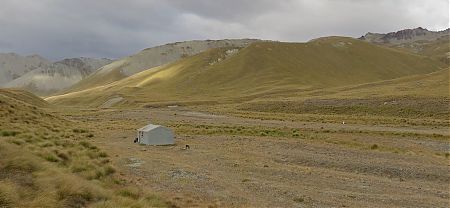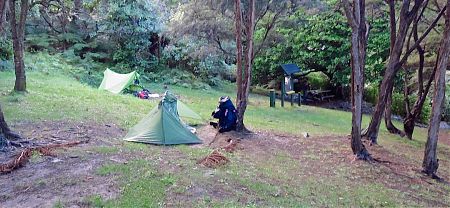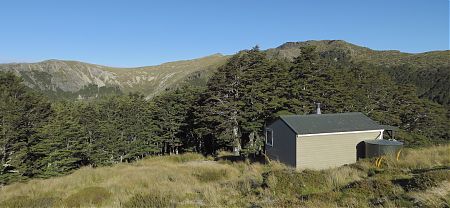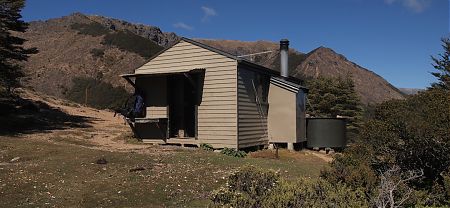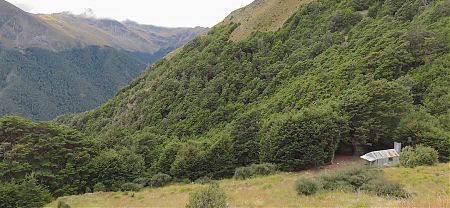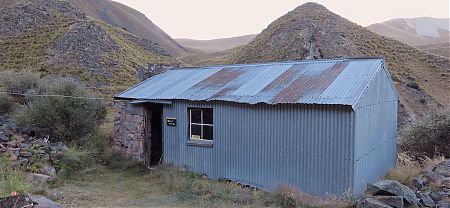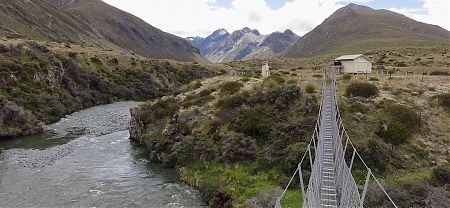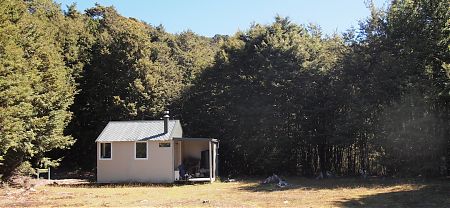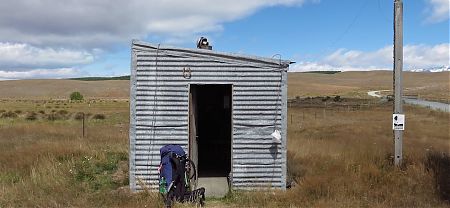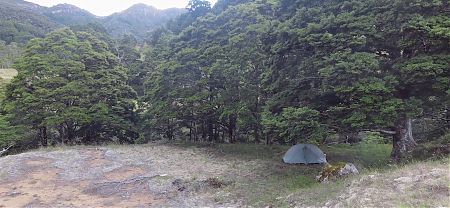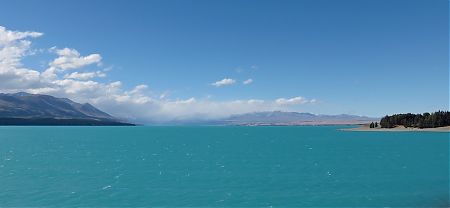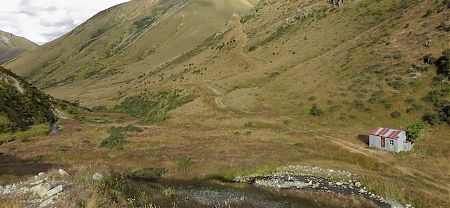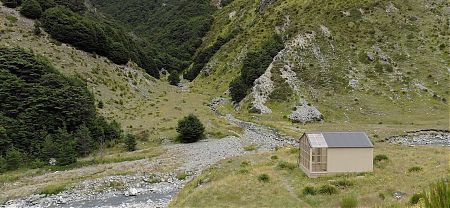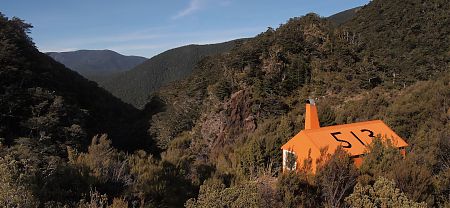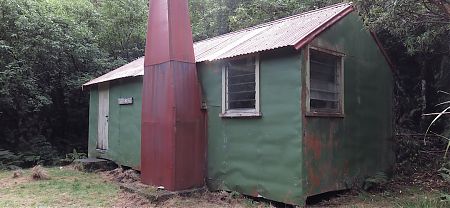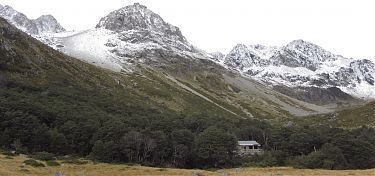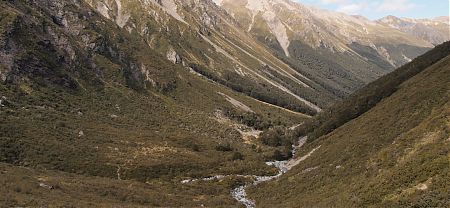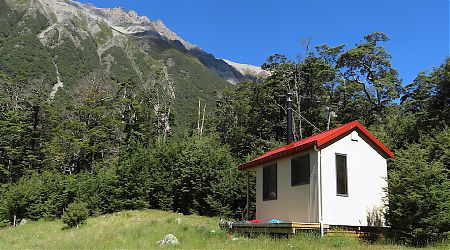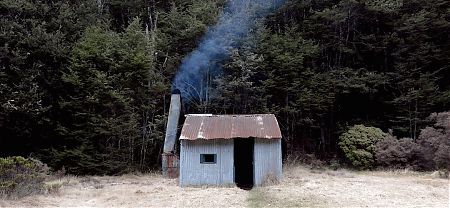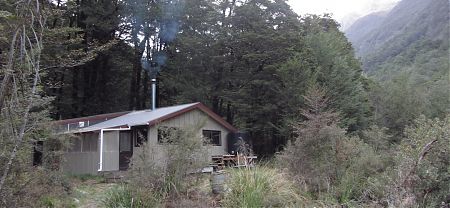The huts and campsites along Te Araroa
There are plenty of huts on the South Island section of Te Araroa. All the same, you obviously need to take a tent. In the north, huts are way more common than found in the North Island section.
From Ships Cove in the north, there are a few days camping before you reach the first hut, Captain Creek in the Pelorus, a standard New Zealand Forest Service-built hut of which there are many similar as you travel south.
The huts, at least until Hamilton Hut, south of Arthurs Pass, are well spaced, often four or five hours apart, often you can skip one during the long summer days. The longest gap here is between Blue Lake Hut in Nelson Lakes National Park and Anne Hut on the St James Walkway, with the new six-bunk Waiau Hut along the way. Caroline Creek Bivvy which may be shown on maps has been removed.
South of Hamilton Hut the huts become vastly more sporadic and they change in character. They are often old musterer’s huts, built when sheep were more common along the route, for the most part they had been removed from the higher country due to the damage done to the vegetation, that’s the sheep not the huts. But you won’t be having tent-free accommodation every night.
South of the Takitimu Range in Southland, well, there’s just the one hut in the last 180 km and camping is required.


A Frame Hut might come in handy if the weather packs it in.
Right on the Clutha River it’s, err, a cheaper alternative to staying in Wanaka. There’s a more secluded campsite 1 km further north along Te Araroa towards Lake Hawea that may be preferable.
Anne Hut is a brand new hut built to a Five Star standard, in a different location, after the old Anne Hut was burned down.
It’s the new Aparima Hut but not that new, maybe 30+ years old. Well sited on a clearing high above the river and right next door to the old one.
Aparima Hut is an old hunter’s hut built in the 1950s that can still be used if the newer hut adjacent has too many inhabitants.
At first sight, the Bay of Many Coves campsite doesn’t look so special, but there are a few splendid sites in the manuka behind the shelter. Actually, these are probably the most pleasant campsites on the entire Queen Charlotte Walkway.
Bealey Hut is an old NZFS-style hut that has had its fireplace removed but is otherwise in fair nick.
A great view to be had at the Black Rock campsite, on the top of the ridge, looking straight over to Picton. You can watch the ferry’s comings and goings.
Short walk, ie, 5 minutes to the remarkable, unforgettable, Blue Lake where you can see for yourself the clearest freshwater in the universe.
No firewood is nearby, so no heating is provided; otherwise, it has a cosy feel.
Boyle Flat Hut is just over the swing bridge across the Boyle River on a small grassy flat.
Set on a sunny clearing, if it’s sunny, before you start the climb up to, or when you finish your descent from, Totara Saddle.
Cameron Hut is from 1955, with plenty of character, ie, the concrete floor doesn’t extend under the bunks where it’s just 60-year-old dirt, there’s a fireplace, and graffiti stretching back in time, hut users from decades past.
The Camp Bay campsite is down by the water, Endeavour Inlet, but not actually with specific water views, at least from your campsite.
Camp Stream Hut is an 1898 musterers’ hut that has been DOC-ified over the years, with bunks and mattresses added.
Set on a river flat above the magnificent Pelorus River, you can swim on a summer’s day.
Careys Hut is an older hut at the northern end of the North Mavora Lake. It suffers from the evils that befall huts with 4WD and/or boat access, both plenty of rubbish and a disappearing axe and broom.
Removed on 22 March 2022.
Comyns Hut is a musterers’ hut at the northern end of the famous “63 river crossings in an afternoon” that are either just completed or to be contemplated.
You will find two substantial kitchen structures, water at the sinks, flush toilets, and, typical DOC style, almost level camping areas that you may, or may not, be able to fix your tent pegs in.
Crooked Spur Hut is another one of the character-filled, old musterers’ huts that populate this part of Te Araroa.
Flush toilets, and a zany kitchen shelter that has a water tank and some benching, and a choice of two camping areas, one by the water, not close to the facilities and another with almost level camping sites, surrounded by regenerating scrub. What more do you need?
Lots of character here, including plenty of historic graffiti on the internal walls.
Emerald Pool campsite doesn’t have much in the way of facilities, but for the experienced camper, there’s most of what you need: a flat area to pitch your tent, flowing water nearby, and the jackpot, a picnic table.
Closest to Wanaka and therefore the most accessible on the Motatapu Track, Fern Burn Hut has a reasonable number of daytrippers and overnighters who don’t want to commit to the full expedition.
Goat Pass Hut has a great location, one of the more spectacular around. And a reasonable level of amenity, other than a lack of heating.
Greenstone Hut is similar in style to the new Mid Caples Hut, ie, generous in space, firedoors on the two separate sleeping areas, double glazing, bigtime insulation, taps inside the hut, at least during summer, otherwise you need to go outside to the rainwater tank. And the big picture windows.
Despite the flow of Te Araroa trampers raring to move on, it is in reasonable condition.
Hamilton Hut is surprisingly spacious accommodation, with two separate sleeping areas and an enormous central fireplace that is not used but houses a large firebox.
Harper Pass Bivvy is a tiny box, frigid for much of the year, not so far from the summit of Harper Pass, that can accommodate two close friends.
Highland Creek Hut has the most spectacular setting of the Motatapu huts with the same efficient design as Rose’s: two large sleeping platforms with mattresses, a big table and plenty of seating.
Hope Halfway Hut was once kinda halfway between a hut and a simple shelter, once you ascended the giant front door step it provided comfortable enough accommodation for those who have not managed to get all the way to the more amenity rich Hope Kiwi Lodge.
Hope Kiwi Lodge was once the outstanding hut in the area, still much used by scout groups and school parties, it’s now somewhat faded and in serious need of a makeover.
Somehow when a hut has a big table with seating and decent windows to look out at a view it seems your standard tramper has hit the jackpot.
Hurunui Hut is the usual everything-in-one-big-room style of DOC hut that tends to promote social interaction, if there are others about, and ain’t that what tramping in NZ is all about.
Yup, character+, one of the more memorable huts you will encounter, at least architecture-wise.
Great setting for a valley floor hut, close to the Travers River with the scenic mountain backdrop of the, err, Travers Range.
Kiwi Burn Hut is a short walk up the creek and across some river flats from the Te Araroa official track and has the feel of an old 1950 school, maybe it’s those red vinyl tiles on the floor.
Kiwi Hut is a standard issue NZFS 8 bunker set on the edge of attractive red beech tree forest, with a fireplace, although it’s not actually standard with its curiously large airlock room.
The Klondyke Corner campsite has a basic shelter, with a roof and plenty of half height walls, ie, an excess of ventilation, and some not quite comfortable benches.
Lagoon Saddle A-frame Hut is one of two structures in close proximity. Not exactly sure why two shelters are needed. This is the more recent of the two.
DOC defines Lagoon Saddle Hut as “basic” and you’d have to agree. It’s a windowless large garden shed with a couple of mattress-less bunks and a small bench.
The proximity to the road means plenty of use, overuse during the busy times, both by those on the Travers-Sabine circuit, and those venturing not so far, overnighters.
Some bush construction skills are still evident, rafters, hand-hewn floorboards, etc. There’s plenty of character to soak up.
Lower Princhester Hut is a standard NZFS SF70 six bunk hut in remarkably original condition considering it’s possible to drive a 2WD car almost to the front door.
Lower Wairaki Hut is an old NZFS four bunker in the southern Takitimus in fairly original condition.
Not many facilities here and a long way to get water from the Arrow River but it is a pleasant spot to put up a tent under the leafy trees.
Just a bit off the main Te Araroa track this is another old musterers’ hut.
Martins Hut is the final/first hut on Te Araroa, actually the only DOC hut in the southernmost 180 km.
This is a reminder of what some of the old NZFS huts were like back in the day: open fireplace, poorly orientated, galvanised steel bench top.
One of the old style NZFS SF70 huts like the one’s either direction, Captains Creek and Middy Creek.
Mingha Bivvy was just about completely rebuilt in 2019 with new piles, substructure, flooring, studs, roofing, and chimney. Only the original steel sheet cladding and roof structure was reinstated.
Rintoul is an old NZFS hut, well renovated, with plenty of light streaming in. That’s double nice.
A great little hut set in a sizeable clearing.
Built in 2011 to fill the gap for Te Araroa the hut already seems too small but if less than completely full is cosy enough.
Old hut with a good vibe and a vibrant exterior colour scheme.
Red Hills hut does have a few picture windows, for a view, all double glazed, and the big insulation keeps the passive solar accommodation warm enough, at least on a sunny day.
It’s a good ‘un, complete with flushing toilets, two, a big water tank and a view into the Pelorus River valley, and, for some reason, despite its proximity to Nelson it’s not used all that much.
The hut is sited on a sunny flat above the junction of two major components of the Pelorus, swing bridges over both, and with an attractive pool just downstream. Nice.
Rokeby Hut is small, with emphasis on small. The canvas bunks are comfortable enough, kinda like sleeping in a hammock.
These are the new breed of DOC huts, double-glazed, heavily insulated and, in this instance, being in tussock country and lacking in firewood, no heating.
Royal Hut is another old musterers’ hut from station days but it has the usual facilities you expect in a DOC hut.
Schoolhouse Bay is somewhat lacking in amenities, no kitchen shelter here, just a tap on a post, and the campsites are deficient in one expected requirement, ie, it sure ain’t flat.
A standard NZFS hut from back in the day has been renovated: the open fireplace replaced with a firebox; painted inside and out; and is as comfortable as any along the route.
Yup, she’s a pretty nice spot and a great old hut.
Stodys is an old musterer’s hut that has been recently renovated to give it another few decades of life.
There’s part of the stone bit left, the fireplace end, but Stone Hut has been hit by avalanches in the past, not worth staying here in the winter when there is snow on the hills.
The Mavora Walkway was a 1970s attempt at creating new tramping tracks purely for recreation.
Set just off the main track in a sunny clearing, when it’s sunny, Tarn is another well renovated, comfy, hut.
An historic two bunk hut that is acceptable accommodation in an emergency.
The only thing that designates Telford campsite as an actual campsite is the standard DOC fibreglass long drop over the fence in official DOC-land.
The views are terrific. And better now all the actual Pines have been harvested.
Tin Hut is an old dusty, musty musterer’s hut that is available for use by the public. The graffiti on the hut exterior makes for interesting reading.
Top Timaru Hut is an old NZFS hut that has been completely transformed with a 2011 renovation, including a usefully large verandah added.
Another original, almost, NZFS hut that retains its open fireplace, a smoky experience apparently, according to the hut book, you get the fire going but have to open the door and windows. Those were the days.
Upper Deception Hut is really the Mid Deception and is the only hut on the Deception River. The Lower Deception Hut was burned in the 1980s so it could even be called simply the Deception Hut.
Nestled in a most picturesque location just under the climb to Travers Pass.
It’s a great spot, but it could do with a dunny dropped in.
A brand new hut built in 2017 to take a few of the 5000+ Te Araroa hikers now streaming over from Blue Lake via Waiau Pass.
West Harper Hut has considerable character: bush-cut structural timbers, no flooring provided, it’s dirt, hammock-style canvas bunks. Basically, the opportunity for a trip back to the distant past.
One of the huts for the Travers-Sabine circuit that is hard for many on the track to avoid staying at, Upper Travers to Sabine would be a big day, well, unless you head up to Blue Lake.

